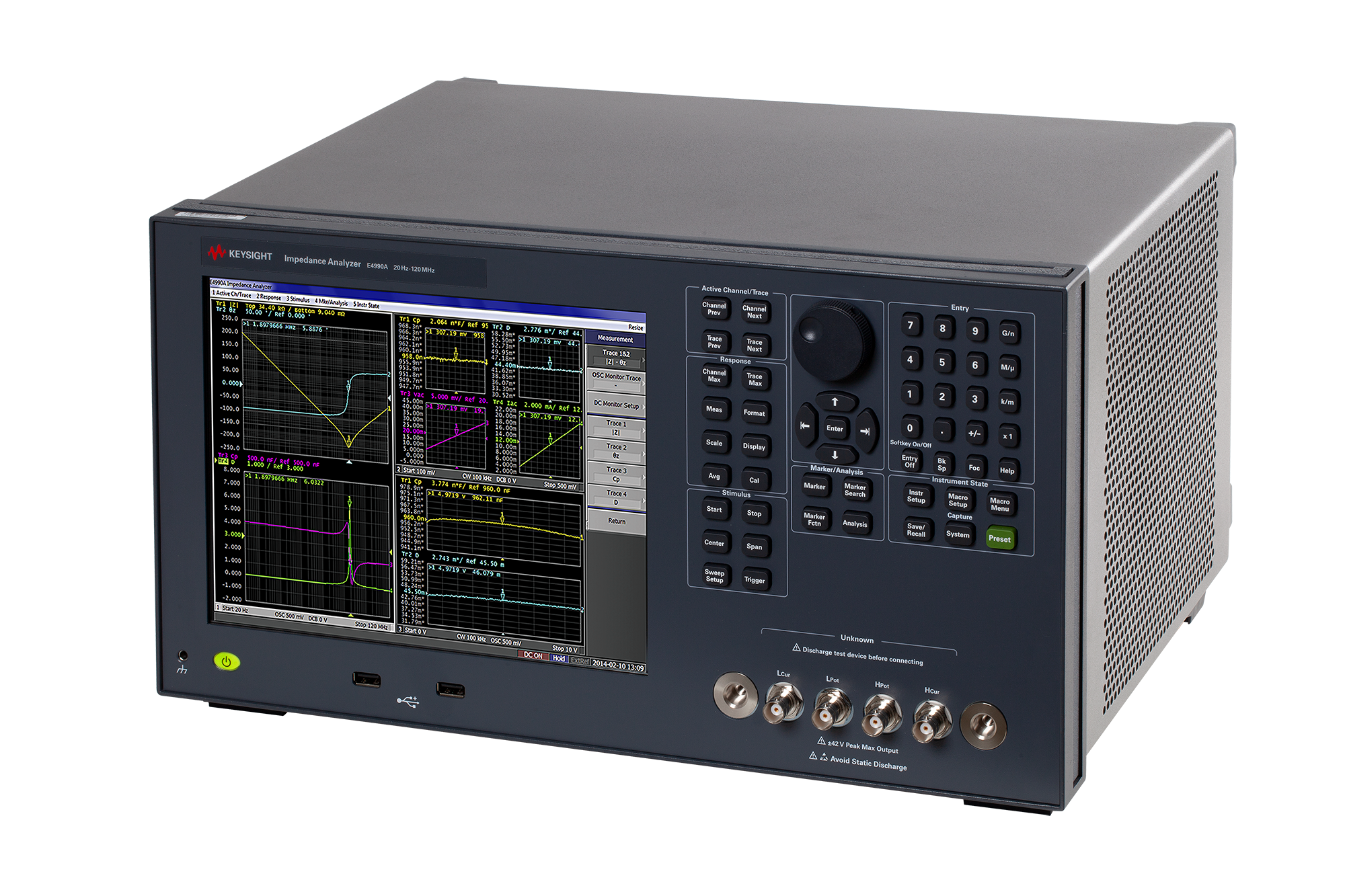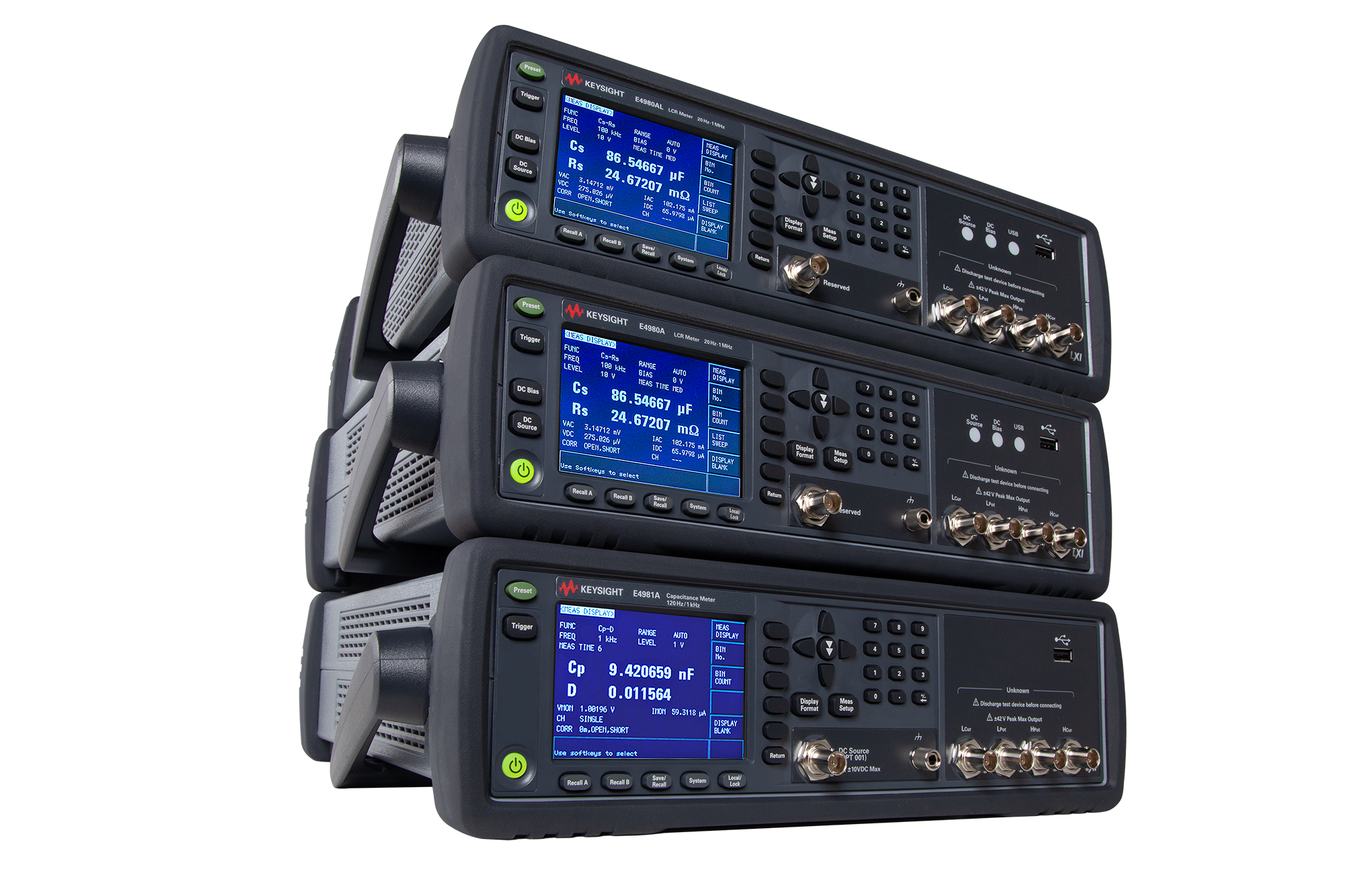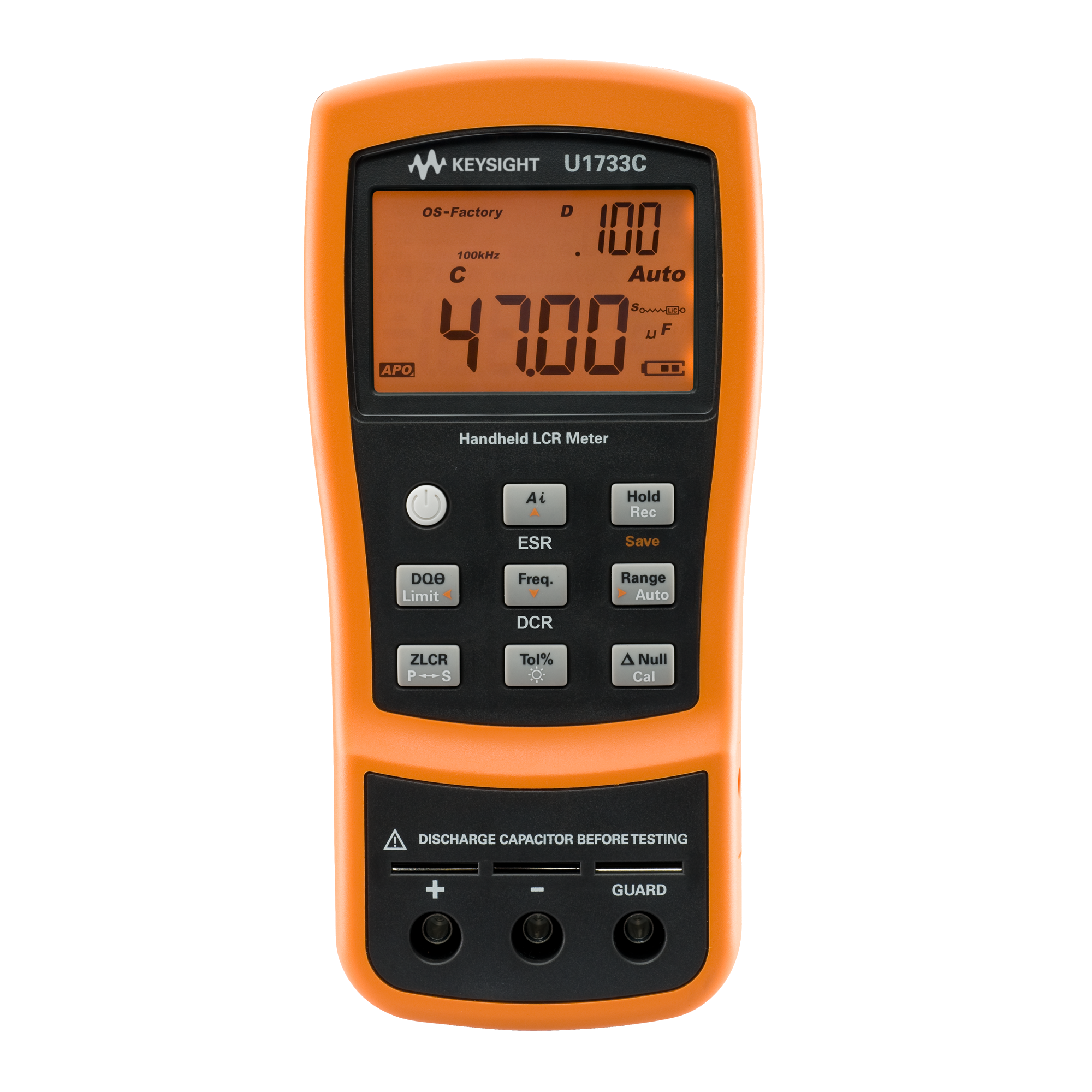What are you looking for?
LCR Meters and Impedance Measurement Products
Complete impedance measurement solutions to meet your needs from LCR to impedance meters, plus test accessories for various R&D and manufacturing applications.


Achieve Success with the Industry Standard for Impedance Measurements
We have proudly contributed innovations and product excellence in impedance measurements for over half a century. Whether you work in research and development (R&D), production, or quality assurance, we deliver complete impedance measurement solutions to meet your needs. This includes LCR meters, impedance meters, and a wide variety of test accessories. Achieve success with Keysight’s impedance measurement solutions.
Find the Series That's Right for You
Featured Resources
Frequently asked questions - LCR Meter
LCR meter refers to a test instrument that specializes in component performance testing. Engineers use LCR meters while conducting parametric tests on electronic components to measure device inductance (L), capacitance (C), and resistance (R). LCR meters provide comprehensive insights for engineers verifying electronic component performance.
Engineers use LCR meters as one of the many test instruments to execute parametric measurements. Parametric testing, as the name implies, quantifies the "parameters" of the operation of a circuit under various conditions. These measurements focus on identifying the values of specific characteristics that define the intended behavior of electronic devices.
Parametric testing generally involves electrical testing and characterizing four main types of semiconductors: resistors, diodes, transistors, and capacitors. This is not to say that parametric tests never involve the testing of other device types; however, engineers classify the vast majority of parametric test structures into one of these categories or a combination of these categories. The vast majority of parametric testing involves either current versus voltage (IV) or capacitance versus voltage (CV) measurements.
Engineers commonly measure the following parameters and secondary parameters using an LCR meter:
- Resistance (R): Measures how much a component opposes the flow of electric current.
- Capacitance (C): Indicates a component's ability to store electrical charge.
- Inductance (L): Measures a component's ability to store energy in a magnetic field when electric current flows through it.
- Quality Factor (Q): Represents a capacitor's energy storage efficiency.
- Dissipation Factor (D): Indicates energy loss of a capacitor.
- Equivalent Series Resistance (ESR): Delineates the inherent resistance behavior typically found in capacitors across selected frequencies.
In addition to LCR meters, engineers use the following tools for parametric testing:
- Multimeter: Provides basic measurements of voltage, current, and resistance.
- Oscilloscopes: Captures and display voltage as a waveform, showing how it changes over time.
- Spectrum Analyzers: Analyzes the frequency spectrum of electrical signals to identify their composition.
- Network Analyzers: Measures electrical network parameters, such as S-parameters, necessary for RF and high-speed digital circuit design.
Parametric testing ensures that electronic components and systems perform as intended, providing valuable data for design validation, quality assurance, and troubleshooting.
Parametric measurements are essential across various stages of the product lifecycle. During design, engineers evaluate component parameters to verify that they meet the system specifications. Manufacturing engineers use LCR meters to ensure product quality and compliance. Once a system is deployed, technicians use LCR meters to verify functional behavior and diagnose performance degradation or damage.
Without precise measurements provided by LCR meters, designs would suffer from unchecked inefficiencies and risk catastrophic failure. Quantifying this opposition to electric current within materials or components accurately allows engineers to tailor designs for optimal performance.
For more information, read this application note delving into parametric measurement details:The Parametric Measurement
Engineers consider resistance, capacitance, and inductance as primary electronic parameters. These primary electronic parameters define circuit operation. Engineers call the consequential properties derived from primary electronic parameters secondary electronic parameters. Quality factor, or Q factor, is a secondary electronic parameter that engineers use LCR meters to quantify. Q factor describes the ratio of energy storage in a capacitor to energy lost through heat or equivalent series resistance (ESR). LCR meters also capture component ESR.
Q factor inversely relates to another secondary electronic parameter: dissipation factor, or D factor. LCR meters also measure D factor.
Keysight LCR meters provide accuracy, speed, and versatility at affordable prices for both R&D and production applications.
- Benchtop LCR meters provide the best combination of accuracy, speed, and versatility for a wide range of component measurements.
- Handheld LCR meters enable quick, basic LCR measurements in the field.
To learn more, visit:Distribution Products Catalog November 2023
Want help or have questions?













